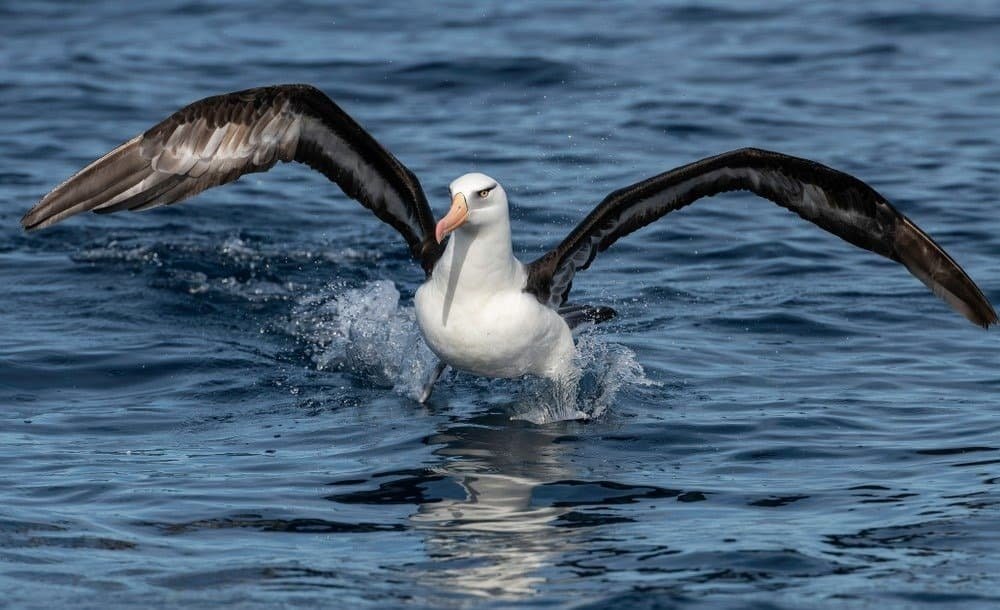21 September, 2024
10 Comments
1 category
Introduction
Albatrosses are fascinating birds known for their incredible wingspan and ability to fly long distances over the ocean. They are part of the family Diomedeidae and are primarily found in the Southern Ocean and the North Pacific. These magnificent birds have captivated sailors and scientists alike for centuries.
1. Physical Features
A. Impressive Wingspan
- Giant Wings: The wandering albatross holds the record for the largest wingspan of any bird, reaching up to 11.5 feet (3.5 meters). This massive wingspan allows them to glide effortlessly over the ocean, covering hundreds of miles without flapping their wings.
B. Unique Appearance
- Coloration: Albatrosses typically have a mix of white and dark feathers. The body is often white or light brown, while the wings are darker, helping them blend into their ocean surroundings.
- Strong, Hooked Beaks: Their beaks are long and curved, which are perfect for catching slippery prey like fish and squid.
2. Habitat and Distribution
A. Oceanic Range
- Where They Live: Albatrosses can be found mainly in the Southern Ocean surrounding Antarctica and in the North Pacific Ocean. They prefer remote islands for nesting, which are often free from predators.
- Pelagic Lifestyle: These birds spend most of their lives at sea and only return to land to breed, making them true ocean wanderers.
B. Breeding Islands
- Nesting Sites: Important breeding locations include South Georgia, the Crozet Islands, and the Auckland Islands. These areas provide safe nesting environments with ample food sources nearby.
3. Behavior and Feeding
A. Diet and Foraging
- What They Eat: Albatrosses primarily feed on fish, squid, and krill. They are known to scavenge from fishing boats, taking advantage of scraps thrown overboard.
- Foraging Techniques: They use a technique called dynamic soaring, where they exploit wind currents to travel vast distances while conserving energy. This allows them to stay in the air for hours or even days.
B. Social Behavior
- Living in Colonies: Albatrosses are social birds that nest in large colonies. This helps protect them from predators and allows them to communicate with each other through vocalizations and displays.
- Courtship and Mating: Albatrosses perform elaborate courtship dances, which include synchronized movements and calls to attract a mate.

4. Reproductive Behavior
A. Lifelong Partnerships
- Monogamous Bonds: Many albatross species mate for life. Once they find a partner, they often return to the same nesting site each year.
- Nesting: They typically lay a single egg, which both parents incubate for about 11 to 13 weeks.
B. Raising Chicks
- Chick Care: After the egg hatches, both parents feed the chick by regurgitating food. The chick remains dependent on its parents for several months and learns to fly before leaving the nest.
- Fledging: Young albatrosses take flight at about 4 to 6 months old and will often stay near their parents for several months as they learn to hunt.
5. Migration and Navigation
A. Long-Distance Migration
- Traveling Far: Albatrosses are known for their incredible migration journeys. Some species can fly thousands of miles across the ocean to find food or reach breeding grounds.
- Tracking: Scientists use GPS trackers to study their migration patterns and understand how they navigate across vast distances.
B. Navigation Skills
- Finding Their Way: Albatrosses are excellent navigators. They use the sun, stars, and even the Earth’s magnetic field to find their way, enabling them to return to specific breeding sites year after year.
6. Conservation Status
A. Threats to Survival
- Overfishing: One of the biggest threats to albatrosses is bycatch in longline fishing. They can get caught on fishing hooks, which can lead to injury or death.
- Habitat Loss: Climate change, habitat destruction, and introduced predators on nesting islands (like rats and cats) also pose significant risks to their populations.
B. Conservation Efforts
- Protective Measures: Various international agreements aim to protect albatrosses, including the Agreement on the Conservation of Albatrosses and Petrels (ACAP).
- Bycatch Reduction: Implementing bird-friendly fishing practices, such as using weighted lines or bird-scaring devices, can help reduce accidental catches.
7. Cultural Significance
A. Symbolism in Literature
- Good Luck or Bad Luck: Albatrosses have a strong presence in maritime folklore. They are often seen as symbols of good luck, but in some tales, they can also represent bad omens, as depicted in Coleridge’s poem “The Rime of the Ancient Mariner.”
B. Ecological Indicators
- Health of Marine Ecosystems: Albatrosses play a crucial role in marine ecosystems as top predators. Their presence indicates a healthy ocean environment, and monitoring their populations can provide insights into ocean health.
Conclusion
Albatrosses are truly remarkable birds, celebrated for their size, beauty, and unique adaptations for life at sea. Despite facing numerous threats, conservation efforts are underway to protect these magnificent creatures. By understanding and supporting these efforts, we can help ensure that future generations continue to marvel at the grace and endurance of albatrosses.
Further Reading and Resources
- Books: “Albatrosses and Petrels Across the World” for an in-depth look at these amazing birds.
- Websites: Check out BirdLife International and the Royal Society for the Protection of Birds (RSPB) for conservation updates and how you can help.
Category: Uncategorized




non prescription drugs
highest discount on medicines online
order prescriptions
medicine prices
cheap pharmacy
prescription pricing
medications with no prescription
prescriptions from canada without
certified canadian online pharmacy
good online mexican pharmacy